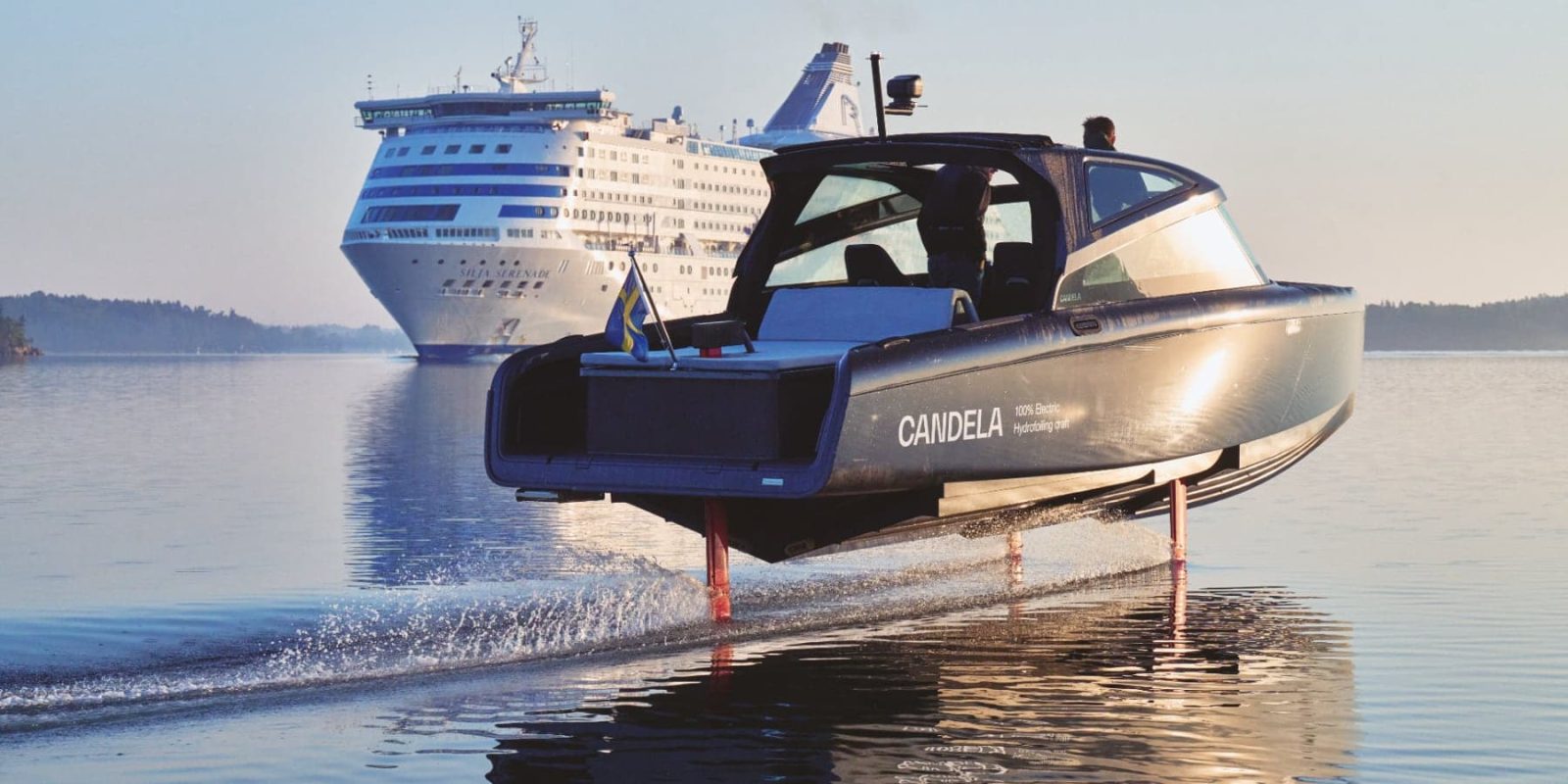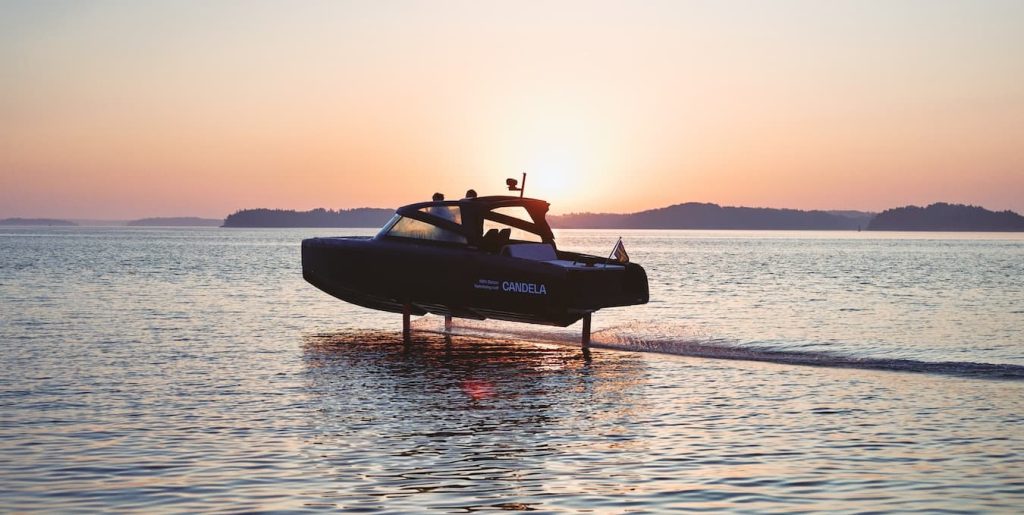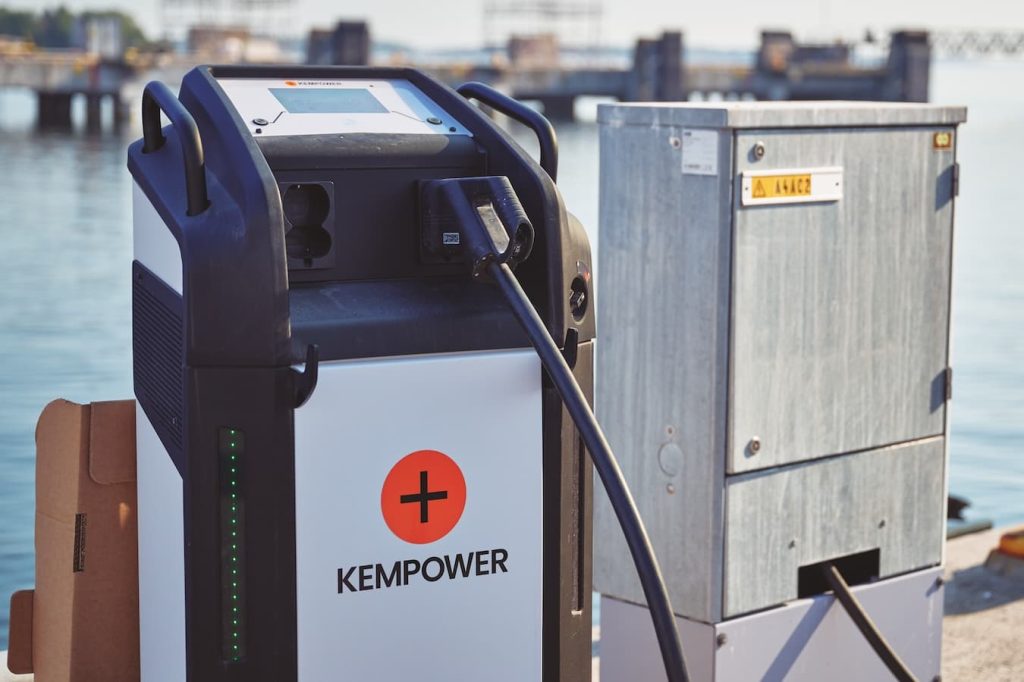
Candela can’t cease setting or breaking data with its high-tech hydrofoil electrical boats. The most recent report takes benefit of the vessel’s DC Quick Charging capabilities and ultra-efficient design to shortly cruise between Sweden and Finland.
The voyage marked the primary time an electrical boat has ever crossed the Baltic Sea, and it did so in model, flying roughly a meter above the waves on a hydrofoil boat.
The Candela C-8 makes use of computer-controlled hydrofoils that raise the boat out of the water, leaving simply 1% of the boat within the heavy resistance water. By hovering by means of the air, the Candela C-8 makes use of simply 20% of the vitality wanted by different boats.
The spherical journey from Sweden to Finland and again lined a distance of 150 nautical miles (172 miles or 278 km).
“The purpose was to display that long-distance electrical sea journey shouldn’t be solely potential at the moment, however that foiling electrical ships and boats outperform fossil-fueled vessels in each manner,” mentioned Gustav Hasselskog, CEO and founding father of Candela.

The record-setting journey was made within the newest model of the leisure boat Candela C-8, outfitted with a Polestar 69 kWh battery. The boat set off early within the morning from Stockholm’s Frihamn.
After a charging cease in Kapellskär, they arrived in time for lunch in Mariehamn, the capital and largest city of the Åland Islands, an autonomous area of Finland. In doing so, the C-8 grew to become the primary electrical boat to cross the Baltic Sea and display the benefits of electrical boats past quick vary journey. The return journey adopted the identical route, arriving again dwelling for (a late) dinner.
“The drawback of electrical boats has been their quick vary, resulting from conventional boat hulls consuming a lot vitality. With our hydrofoil know-how, we mix excessive pace and vary, however you get so many different advantages. Flying over the Åland Sea in complete silence and with out slamming was completely magical,” mentioned Gustav Hasselskog.
Apparently, the associated fee financial savings of the journey have been additionally consequential. A similarly-sized gasoline-powered chase boat adopted together with a digital camera crew to doc the voyage, and it spent round 750€ on gasoline stops alongside the best way. The Candela C-8’s charging invoice would have come to roughly 50€, although one crew member on the Candela boat remarked that the pleasant harbors truly allow them to cost without cost.
“We truly had vary nervousness, however not for the Candela. The irony is that the photographer’s gasoline-powered chase boat needed to refuel six instances through the journey, whereas we solely charged 3 times,” mentioned Gustav Hasselskog.
And that’s to not point out the a lot smoother journey of the C-8, which glides above the peaks and troughs of the waves, as an alternative of bouncing over them like a standard planing boat.


The journey was carried out largely utilizing the prevailing charging infrastructure alongside the best way, and was carried out in partnership with Kempower, a charging options supplier.
In Kapellskär, the Candela charged with a Kempower Movable Charger, a 40-kW wheeled charger linked to the prevailing energy grid on the harbor. In Finland’s Mariehamn, the boat was plugged into the marina’s three-phase outlet.
“Kempower is proud to contribute to the electrification of cruising and assist create greener waterways. Electrical boats mixed with hydrofoiling supply the absolute best effectivity. Kempower’s DC quick charging options are perfect for electrical boating, and our Kempower Movable Charger is a plug-and-play answer that integrates seamlessly with {the electrical} grids already out there in lots of marinas,” says Antti Vuola, Kempower’s Director of Market Segments.


